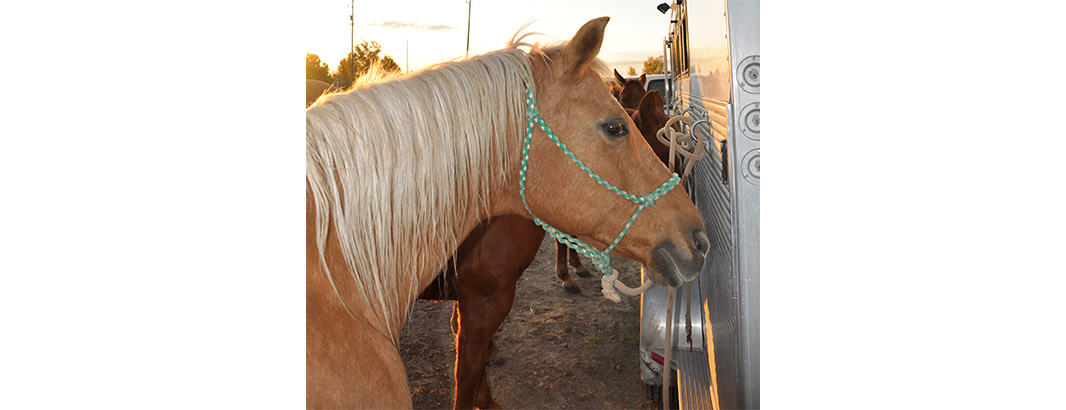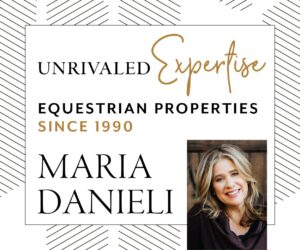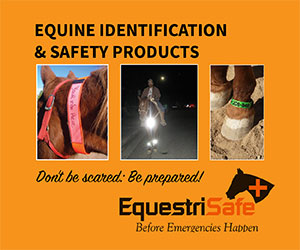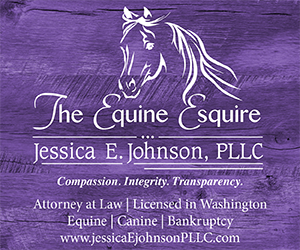Six Proactive Ways to Keep Your Horses Safe
by Alayne Blickle
A wildfire can quickly become a real threat to rural landowners. When horses are involved, action needs to be taken quickly to save the lives of your animals and reduce property damage. Being proactive is the safest plan. Use these tips to begin your pre-wildfire evacuation planning.
Horse property fires can have different causes—from barn fires to lightning strikes—and all may include emergency evacuation. When living in a dry, flammable environment it is imperative that you are prepared to quickly move your horses to a safe area. Fire travels rapidly, especially when wind is involved. If a wildfire breaks out in your area, decide early on whether you need to leave. Late evacuation is a deadly option that risks the loss of lives and property. If you are unprepared, or wait until the last minute to evacuate, you could be told by emergency officials to leave your horses behind. Once you leave your property, you have no way of knowing how long you will be kept out of the area. If left behind, your horses could be unattended for days without care, food or water. If you decide to stay and actively defend your property from fire, be aware of the risks.
Everyone’s situation differs according to the size and nature of their horse enterprise. That’s why every horse owner needs to develop an individual evacuation plan before hot weather and fire season arrive. Begin your planning with these tips:
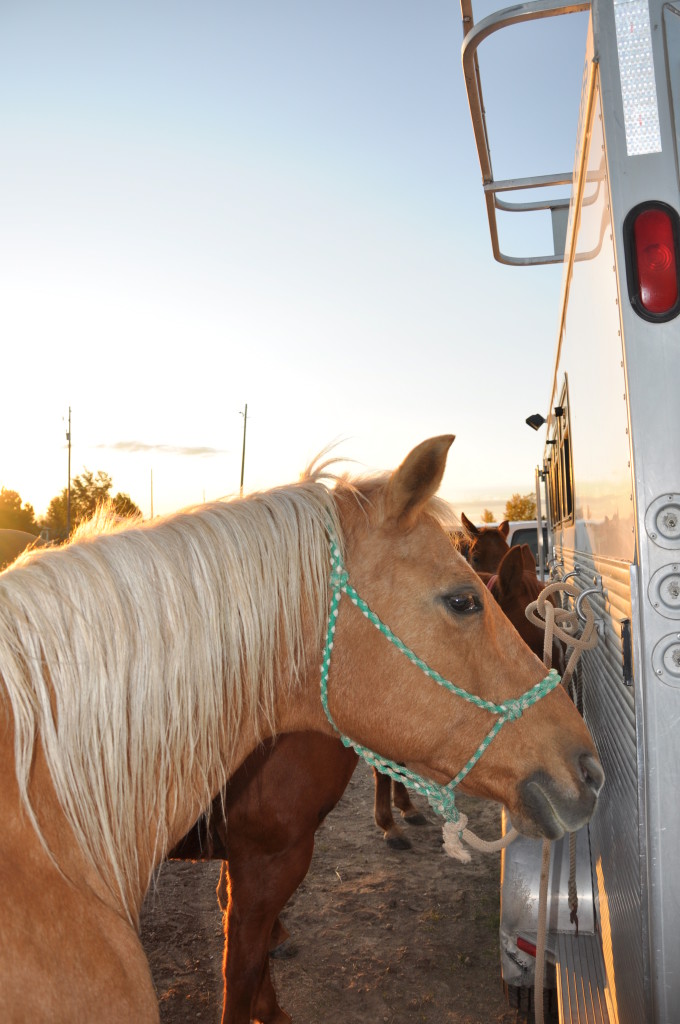
1) Make sure in advance that your horses are suitably trained for transport.
2) If you do not have enough trailer space for all of your horses, make arrangements ahead of time. Talk with a nearby horse friend who might be willing to pick up your extra horse(s) and transport them. Discuss which horse they would transport, where to take them and how this process might work.
3) Remove all synthetics from your horses such as nylon halters, blankets, sheets and fly masks. These materials are plastic and can melt when an ember hits them, causing serious burns. Instead, use cotton or leather leads and halters, avoiding metals and buckles.
4) Pre-determine possible locations to take your horses to should a fire arise. Possibilities include:
- A friend’s horse property
- Stockyard or sales yard
- Fairgrounds
- Show grounds
- Racetrack
- Large park
Do not assume any of these sites are an options; have a conversation beforehand with the appropriate personnel to inquire whether they would accept care of your horses during any emergency. Review what the expectations and requirements might be, and how you would compensate them.
5) When evacuation is not possible, place horses in a pre-identified fire-safe area on your property. A fire-safe area should be as large as possible, with non-flammable fencing (metal or wire) and footing (sand, bare dirt or gravel.) Possible fire-safe areas could be a sand arena with panel fencing, a large dry lot turnout with wire or field fencing or an overgrazed field with wire fencing. Put water and feed in the center in non-flammable (metal) containers.
6) If you are leaving your horses in your fire-safe area and time permits, remove halters (so that the horse doesn’t get caught on anything) and ID your horse(s) by writing your cell phone number on a front hoof with a magic marker or on the hip with a grease marker (the kind used in cattle sales yards or endurance rides.) Do this only if time permits!
See the Horses for Clean water website for fire-wise information on reducing wildfire risk on your property or for evacuation planning with horses: http://www.horsesforcleanwater.com/educational-materials/firewise/ It is easy to think wildfires only happen to other people, but this kind of thinking can lead to tragic consequences. Don’t wait until an evacuation to start planning. Act now to prepare a fire-wise plan for your horse property.
Published in August 2015 Issue
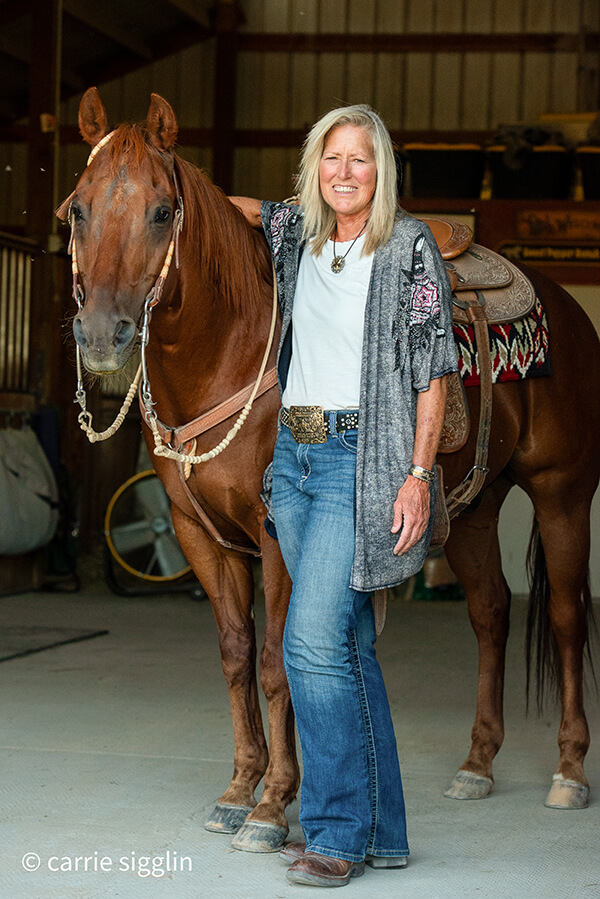
Alayne Blickle began in the 1990’s as a pioneer in water conservation and natural resources conservation by creating the entrepreneurial consulting business, Horses for Clean Water, an award-winning internationally acclaimed education program that looks for horse-healthy, nature-based solutions to land management challenges. She continues this work today partnering with agencies, organizations, and horse owners throughout North America and worldwide. She is a regularly contributing writer and photojournalist to several equine publications.
Alayne lives with her horse trainer husband, Matt Livengood, in southwestern Idaho where they raise and train AQHA horses and mustangs on their eco-friendly horse ranch. Contact her through the Horses for Clean Water website or through their ranch website Sweet Pepper Ranch.
For more information contact Alayne at alayne@horsesforcleanwater.com or 206-909-0225.

